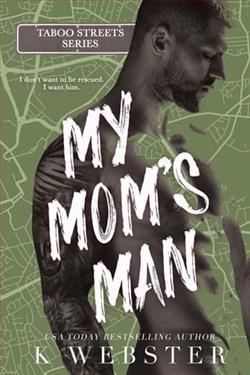Page 52 of One Year Ago in Spain
Together, they walked up to the sleek white building that housed a number of artist workspaces. It was only one story, but tall and long, and when they stepped through the gated entry, Claire was surprised to find a sunny garden full of orchids and ferns. All the studios had floor-to-ceiling windows that looked out onto the plants; if Claire had to guess, the windows were all north facing, to let in the best light. It was something Matías had missed in his studio in New York, where—without the right sort of windows—he’d had to rig his own artificial lighting with photography lights and reflectors.
“Matías’s studio is at the end,” Armando said, pointing in the direction of a cluster of yellow orchids. The shades on his windows were drawn, though, so Claire couldn’t see inside.
Armando scanned a key fob and let them into the building, then down the corridor. The doors were all white, too, with nameplates or signs on them to indicate who worked there.
“Is it only painters here, or other kinds of artists?” Claire asked.
“Only painters,” Armando said. “The landlady says potters and sculptors are either too messy when they work with clay or too loud when they work with stone. Do not worry. You will not see Vega here.”
Claire bit her lip, thankful that he’d understood her insecurity without her having to express it out loud. Then she realized she’d been silly to even worry about Vega. If her studio was here, too, she wouldn’t have seemed sad about not having access to the building.
When they reached Matías’s studio, though, Claire’s thoughts of Vega faded. Because the sign on the studio was his familiar signature, Matías de León, in elegant, looping penmanship with the accent marks somehow expressing exuberance in the way he dashed them upward, longer than necessary, like fireworks shooting up into the sky just moments before bursting. Seeing his autograph made Claire smile and want to cry at the same time.
Armando unlocked the door and held it open for Claire. She stepped in, expecting to see tubes of paint everywhere, half-finished work on easels, used rags and still life models all over the floor, and the general chaos that surrounded Matías’s process. But instead of chaos and the usually ubiquitous stink of solvent in the air, it was mostly empty.
Some old drawings were taped to the walls, with blank panels of wood stacked beneath them, but there were no partially used tubes of oil paint scattered anywhere. It still smelled like solvent and linseed oil, but the scent was faint. Eleven months old.
Claire stared open-mouthed at the pristine space.
“It’s strangely…tidy.”
“He took much of his work with him to the United States,” Armando said.
“I guess so.” Claire walked slowly through the studio. There were two glass-topped taborets—worktables—one close to the door, and one deeper inside, both with old coffee canisters filled with various paintbrushes. Four wooden easels—all sturdy but of varying sizes, because most of Matías’s pieces were “normal” dimensions, but he also liked having a huge, long-running project going on at the same time as whatever else he was working on. Shelves with jars of gesso, PVC, foam brushes, and other lesser-used supplies.
“Do you mind if I open the shades?” Claire asked.
“As long as we close them before we leave, go ahead,” Armando said.
She walked over to the wall of glass and pulled down each of the blinds—they would seem upside down to most people, but that’s because realist painters often liked to block the sun from the bottom part of the window so light streamed from the top, down onto their models at an attractive angle.
There was a gray couch along the windows; Matías liked to brainstorm lying down, which sometimes meant he accidentally fell asleep, but that wasn’t necessarily a bad thing, because his ideas often clarified themselves in his dreams. As Claire passed the sofa, she ran her finger along an armrest, speckled here and there with paint. She wondered which piece each color had come from—red from the thimble-sized alien in the painting of a woman and her book? Orange from the monk offering the world in his hands? Yellow, green, blue, purple, black, and white from other paintings Claire had been lucky enough to see? Ordid they belong to work that had come and gone long before he’d met her?
With sunlight streaming into the studio, the space felt even more like Matías now. She looked through a stack of wooden panels against a nearby wall; they were all prepped with rabbit skin glue and gesso, but they were still blank. Like Armando said, Matías had shipped most of his work with him for gallery shows in New York.
But then Claire noticed what looked like one of Matías’s enormous panels in the back of the studio, propped against the wall. A bedsheet was draped over the painting. She strode over.
Armando turned just as she reached it.
“Claire, do not—”
Too late. She was already lifting the sheet.
Oh.
It was a self-portrait of Matías and Vega, done in Matías’s signature realism, although this one had more than a touch of the surreal. In the painting, he and Vega faced each other in this very studio, but both their figures were unfinished; if this were a photograph, it would be a shot of two artists in the middle of creating their work. Matías held a brush in his hand, painting Vega in front of him, as if inventing her in real time. Her body was fully rendered—with all those sensual curves that Claire couldn’t help imagining his brush caressing—but Vega’s face was still a work in progress, much of it purposefully left as a hazy ébauche, an outline where you could only see a blurry shape of what was to come, including the brown transfer lines from the original drawing. Matías’s brush was in the process of painting her lips.
At the same time, Vega was sculptinghim,creating Matíasout of clay. His head and arms and torso were complete, but her bare hands stroked the part that would become his pelvis.
A wave of nausea roiled through Claire’s stomach. She dropped the sheet over the painting and staggered back.
“It is truly in the past,” Armando said quietly. “That is why Matías left that painting here.”
“Right. Of course,” Claire said.
But how could you leave something that passionate behind for good? Matías and Vega had been together for more than fifteen years. They were both artists, kindred spirits, and he had dreamed of being with her for the rest of his life.
Maybe Claire had just been a rebound. She had been in the right place, at the right time, when he came to New York. The fact that she was Vega’s opposite in personality—a lawyer who lived by her calendar, who didn’t understand a thing about art—might have been exactly what he thought he needed.















